“Overall, the list is quite balanced between those who will argue for and against reform. This is a change in and of itself.”
To kick off the month in which Alice v. CLS Bank will turn five, the Senate Judiciary Committee’s Subcommittee on Intellectual Property will hold its first two hearings on “The State of Patent Eligibility in America.” The hearings are scheduled for Tuesday, June 4 and Wednesday June 5, both at 2:30 PM in the Dirksen Senate Office Building, and the Subcommittee has now published the rosters for both hearings.
As mentioned in a Senate press release last week, there will be three hearings held in total, on June 4, 5 and 11, featuring three panels of five witnesses each, for a total of 45 witnesses over three days. Overall, it is quite balanced between those who will argue for and against reform. This is a change in and of itself; congressional hearings on patent legislation over the past decade have largely favored those arguing against pro-patent reforms.
IPWatchdog will cover these hearings, and several of the witnesses testifying next week — Chief Judge Paul Michel, Sherry Knowles and Phil Johnson —will be speaking later in the month at our Patent Masters™ Symposium titled Alice Five Years Later.
Tuesday, June 4
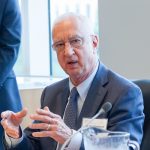
Paul Michel
The first panel for Tuesday includes former Federal Circuit Chief Judge Paul Michel; former USPTO Directors Q. Todd Dickinson and David Kappos; Charles Duan of R Street Institute; and Professor Jeffrey Lefstin of the University of California Hastings College of the Law.
Michel and Dickinson have been active in the reform process, and Kappos presumably understands the importance of having clear language with which to guide examiners.

Todd Dickinson
Charles Duan is Director, Technology & Innovation and Senior Fellow at the R Street Institute, a “nonprofit, nonpartisan, public policy research organization.” Duan has written that “patent protection is beneficial up to a point. But to the extent that patents—or, more commonly, legal strategies involving patents—overreach to suppress competition, that overreach should be cause for concern.”
Lefstin has remarked that the Supreme Court’s recent decisions on Section 101 are “impeding the development of new inventions.”
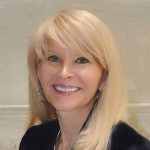
Sherry Knowles
The second panel will feature Robert Armitage, former Senior Vice President and General Counsel for Eli Lilly and Company; Professor David Taylor, Co-Director of the Tsai Center for Law, Science and Innovation and Associate Professor of Law at the Southern Methodist University Dedman School of Law; Sherry Knowles of Knowles Intellectual Property Strategies; Alex Moss of the Electronic Frontier Foundation (EFF); and Mark Lemley of Stanford University School of Law.
Bob Armitage laid out his vision for Section 101 reform pretty clearly in a presentation for a USPTO Roundtable event in 2016.

David Taylor
Professor Taylor’s faculty profile page highlights the following quote right up top: “The Supreme Court’s treatment of patent eligibility has created a moment not unlike 1952, when Congress amended the patent statute to overturn the Supreme Court’s so-called ‘invention’ requirement.” He also has written numerous articles on the topic.
Like her leadership in the long-ago fight against the USPTO’s claims and continuations rules package, Knowles has been a champion for reform, arguing that the Supreme Court’s judicially created exceptions are unconstitutional.
Lemley acknowledged the detrimental effects of Alice on software eligibility in an interview with IPWatchdog, and has stated in another interview that he does “worry that we might continue blindly toward an anti-patent mindset, which could be just as destructive as too strong a patent protection mindset.”
Moss will argue against reform. Her title at EFF is Mark Cuban Chair to Eliminate Stupid Patents and Staff Attorney. She has been vocal in her feeling that the Coons-Tillis bill is “terrible” and “will be a disaster for innovation.” Here is an excerpt from her most recent article on the draft bill:
Who will benefit most from the proposal? Companies that make money from aggressively licensing and litigating patents, especially in the fast-growing fields of artificial intelligence and medical diagnostics. And, of course, the patent lawyers and law firms who make money representing them.
Not to mention, patent trolls. With Section 101 broken, defendants will have lost a powerful tool for fighting bad patents. Most of the small businesses we profiled in our “Saved by Alice” project would have likely been pushed toward lengthy and expensive trials, rather than fast and fair resolutions, in order to defend against false infringement charges.
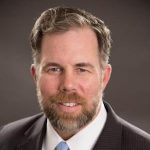
Patrick Kilbride
The final panel of the day will feature Michael Rosen of the American Enterprise Institute; Professor Paul Gugliuzza of Boston University School of Law; Professor Joshua Sarnoff of DePaul University; and Patrick Kilbride, Senior Vice President, Global Innovation Policy Center (GIPC) at the U.S. Chamber of Commerce.
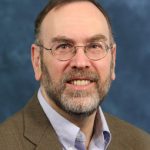
Joshua Sarnoff
Following the release of the GIPC’s International IP Index this year, Kilbride said that patent eligibility law was a concern for GIPC, and that they were encouraged by Director Andrei Iancu’s guidance for examiners.
A recent article summarizing the draft bill released by Coons and Tillis last week gives little indication of Professor Rosen’s view on the subject.
A scholarly article published by Gugliuzza raises the procedural ramifications of the Supreme Court’s recent approach to patent eligibility, and provides a “procedural framework for resolving eligibility that would allow courts to quickly invalidate ‘bad’ patents while reducing the danger they will erroneously invalidate a ‘good’ patent on an inadequately developed record.”
Finally, Joshua Sarnoff has rejected Knowles’ and Anthony Prosser’s argument that the Supreme Court’s judicially-created exceptions are unconstitutional. From his comment posted on Patent Docs:
The “unconstitutional” rhetoric is simply wrong and misleading, as the so-called “judicial exceptions” were always statutory interpretations (in OReilly, Funk, Flook, and since) of the same statutory “invents or discovers” language, and thus the argument is simply that the courts have miscontrued the statute. It would be correct to make a constitutional argument (as I have) that Congress lacks the authority to authorize patents currently held excluded as a statutory matter should Congress choose to do so (and in Bilksi there were arguments that the Constitution did not authorize patents on business methods as not “useful arts”), but unless they are stating that Congress MUST authorize the PTO to issue patents that the judges are holding invalid under the statute, this is simply a garden variety statutory interpretation case, with the unconstitutional argument intended to pander to public sentiments for those already (or who might then be) inclined to believe that argument or to make weight for the statutory construction argument.
Wednesday, June 5
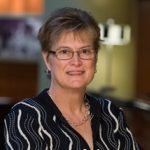
Lisa Jorgenson
The second hearing will feature an array of IP and industry association representatives. The first panel will include Lisa Jorgenson, Executive Director of the American Intellectual Property Law Association (AIPLA); Scott Partridge, Immediate Past Chair of the IP Law Section of the American Bar Association (ABA); Henry Hadad, President of the Intellectual Property Owners Association (IPO); David Jones, Executive Director of the High-Tech Inventors Alliance; and Stephanie Martz, Senior Vice President and General Counsel of the National Retail Federation, who is testifying on behalf of United for Patent Reform.
While most IPWatchdog readers will be familiar with AIPLA, the ABA and IPO, here is some background on the High-Tech Inventors Alliance, which was formed in 2017 by eight tech companies owning a collective 115,000 patents.
United for Patent Reform is firmly pro-Alice, and states on its patent reform page that “in Alice v. CLS Bank, a unanimous Supreme Court restated what had long been the law: abstract ideas like business methods cannot be patented…. Like IPR, Alice made the NPE business model of buying and suing on low quality patents less lucrative and decreased the attacks. Since these changes, innovation and the economy has surged at every significant metric.”
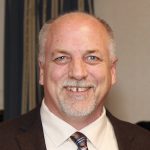
Paul Morinville
The second panel of the day will include frequent IPWatchdog contributor Paul Morinville of U.S. Inventor; Phil Johnson, Chair of the Steering Committee for the Coalition for 21st Century Patent Reform; Dr. William Jenks of Jenks IP Law, on behalf of the Internet Association; Christopher Mohr, Vice President for IP and General Counsel of the Software and Information Industry Association; and Jeffrey Birchak, General Counsel and Vice President of IP, and Secretary, Fallbrook Technologies on behalf of the Innovation Alliance.
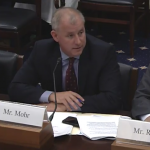
Christopher Mohr
The Internet Association’s members include Amazon, Facebook, Google, etc. and will argue against reform.
Mohr of the SIIA has also argued against reform and in favor of Alice and the AIA in the past. Johnson, Morinville, and Birchak will make the case for reform.

Hans Sauer
The last panel will have a pharma/ bio focus—a particularly crucial area for reform. It will include Jeff Francer, General Counsel of the Association for Accessible Medicines; Hans Sauer, Deputy General Counsel for IP at the Biotechnology Innovation Organization (BIO); Natalie Derzko, Of Counsel at Covington & Burling, on behalf of the Pharmaceutical Research and Manufacturers of America (PhRMA); Rick Brandon, Associate General Counsel, The University of Michigan, on behalf of the Associations of American Universities and Council on Government Relations; and Kate Ruane, Senior Legislative Counsel of the American Civil Liberties Union.
The Association for Accessible Medicines (AAM) said in a statement submitted to the Senate Judiciary Committee earlier this month that the current state of patent eligibility law does “not warrant any sea change in the law,” pointing to cases where the Federal Circuit had upheld as eligible patents that the AAM would argue were ineligible. While AAM said it disagrees with the application of the law to the facts in those cases, it maintained that “meaningful patent eligibility standards, such as those under Section 101, must be maintained if we are to avoid even higher drug prices due to abuses of the patent system by some brand-name drug companies.”
The Associations of American Universities and Council on Government Relations has been supportive of Director Iancu’s Subject Matter Eligibility guidance.
The ACLU, which famously challenged the Myriad patent claims directed to screening, identifying, and isolating the BRCA1/2 genetic sequences, will likely argue against the proposed Section 101 language.
It should be an interesting two days. Stay tuned to IPWatchdog for the full reports.

![[IPWatchdog Logo]](https://ipwatchdog.com/wp-content/themes/IPWatchdog%20-%202023/assets/images/temp/logo-small@2x.png)

![[[Advertisement]]](https://ipwatchdog.com/wp-content/uploads/2023/01/2021-Patent-Practice-on-Demand-1.png)
![[Advertisement]](https://ipwatchdog.com/wp-content/uploads/2024/04/Artificial-Intelligence-2024-REPLAY-sidebar-700x500-corrected.jpg)
![[Advertisement]](https://ipwatchdog.com/wp-content/uploads/2024/04/Patent-Litigation-Masters-2024-sidebar-700x500-1.jpg)

![[Advertisement]](https://ipwatchdog.com/wp-content/uploads/2021/12/WEBINAR-336-x-280-px.png)
![[Advertisement]](https://ipwatchdog.com/wp-content/uploads/2021/12/2021-Patent-Practice-on-Demand-recorded-Feb-2021-336-x-280.jpg)
![[Advertisement]](https://ipwatchdog.com/wp-content/uploads/2021/12/Ad-4-The-Invent-Patent-System™.png)






Join the Discussion
18 comments so far.
Jack Russo
June 1, 2019 01:48 pmWhat happens upon statutory reform to all of the post-Alice/post-Mayo (now adjudicated as Section 101 ineligible/invalid) patents: do they get new life?
Anon
May 31, 2019 12:09 pmGreg quips “ Words have meanings, and even “plenary” authority runs into limitations of the real world.”
And yet, Greg, please tell us where the word “public” comes from, and why do you not address the distinctions that such a word brings?
Bananas, you say. Perhaps true, but then likely NOT how you intend.
Greg DeLassus
May 31, 2019 11:41 am@14 “‘Public right’ v. ‘private right.’ Congress could certainly… abrogate Oil States and any case saying a patent is a ‘public right.’”
There is a scene in Woody Allen’s Bananas where the leader of the communist insurrection (Esposito)—having toppled the government and taken power—announces “From this day on, the official language of San Marcos will be Swedish… Furthermore, all children under 16 years old are now… 16 years old!”
The suggestion that Congress can declare patents to be something other than public rights is rather akin to Esposito’s declaration that those under 16 are now officially 16 years old. Do you imagine that Congress’ plenary authority carries with it the power to declare patents to be a form of real estate physically located in North Dakota? Words have meanings, and even “plenary” authority runs into limitations of the real world.
Anon
May 31, 2019 10:24 amThe post by anonymous @ 11 fell to the easy answer from Greg @ 12.
However, Greg’s answer — while on point as to the fact that franchises ARE a form of property — skirts the issue as to the particular form of property.
That particular form has massive consequences.
As it is, Greg has refused to engage on the merits of any discussion that delves into those consequences.
anonymous @ 14,
You still will not escape the (on the surface) rebuttal from Greg when you classify the nature of the patent right (and the change in that nature due to the Oil States decision) as being merely “public right” versus “private right.”
But you are closer (and much closer than Greg will engage).
The full terminology may warrant use:
a Public Franchise property right versus a Private Personal property right.
This is important for at least two reasons:
1) the one that you allude to: the public versus private nature; and
2) one that is captured in the direct words of Congress at
35 U.S.C. 261 Ownership; assignment.
Subject to the provisions of this title, patents shall have the attributes of personal property.
-.-
While the snippet that Greg offers DOES list Franchises as a form of personal property; such is merely a subset of personal property and is (unfortunately) conflated with the fact that franchise property MAY ALSO be something that is NOT personal property – per se. That is, a property that is a franchise property can be seen to enter an odd** dual-owner state, having one owner being the Franchisor and the other owner being the Franchisee.
** (in the manner that most people think of actual FULL personal property)
While Greg is fully willing to reach back to various case law quotes to show that certain members of the judicial branch have wandered into the use of “franchise” as a description (a cogent point on its own and worthy of discussion), he has absolutely refused to acknowledge the necessary implications that such a word carries with it: specifically, the fact that such a word imparts that dual ownership aspect. He then turns around and wishes to defend the Oil States result while also wishing to avoid any discussion of what must necessarily follow IF the US Government is deemed to be a Franchisor, and the patent right (in the guise of being a subset of personal property in the realm of a franchise property) necessarily imparts duties on that Franchisor towards the Franchisee.
Turning back to the first point then (public v private), THAT discussion is also one in which Greg has been less than forthcoming. This may well stem from – and be augmented by – the refusal to entertain any Franchisor-Franchisee relationship. That relationship would — quite naturally — carry an implication that the Government carry the duty (including expense) of PROTECTING the property that the Franchisee carries. This would mean that the Government would fight any effort to annul or repeal the granted property right, and NOT be some “independent reviewer” or even a vehicle for the Efficient Infringer.
The whole “Public” aspect (IF the “franchise” aspect were carried fully through) then MUST be seen as a perversion of the relationship.
Way back in the lead up to the Oil States decision, here (and elsewhere) I did engage with someone at least willing to engage part-way on this matter. That person (here) posted under his name of Ed Heller (elsewhere, he went by Ned Heller). I note, anonymous, that your link is one in which I did NOT engage Mr. Heller deeply at that particular thread.
Ed was against what was happening in Oil States, albeit for a different (and singularly focused) reason.
In our discussion, I alighted upon the aspect of “Public” in that what was happening was that the Propaganda of the Efficient Infringers was being successful in subverting what had always been deemed a Private right…
(belonging to the person in the sense of FULL personal property – OR in contrast and “going along” with Greg’s “franchise property” view: that of being a private franchise property between the Government as Franchisor and the private person as Franchisee)
… into a Sui Generis (and mirrored) Public right that provided a nullification of the actual personal property grant.
Somehow, the Public was imbued with an “anti” right and it was this Public aspect that has been “glommed onto” what was distinctly separate in the grant of a patent.
This “anti” was cast as a shadow that somehow was inherent in the grant itself. But one MUST NOT look closely at this shadow, nor must one attempt to distinguish “Public” from “Private” (or even look at the necessary relationship of Franchisor/Franchisee), else one would see that this ENTIRE desire to nullify a granted property right is a cancer separate from the original entity known as a patent right (BE that patent right deemed to be merely a subset of personal property under the “franchise” tag or otherwise).
SO…
looking at the FULL nomenclature – in order to defuse the spin – and then turning to distinguish the “Public” from the “Private,” one may fully appreciate the nuance manipulation that comes from a “but that is a franchise right and franchise still falls under personal property designation” argument that avoids the necessary repercussions of Franchisor/Franchisee AND avoids a critical view of the “switch” from “Private” to “Public” (and how this switch “voids” the essence of what “franchise” necessarily entails).
anonymous
May 30, 2019 11:44 pm“Public right” v. “private right.” Congress could certainly clarify what a patent is and why it matters. The plenary authority of congress over patent policy trumps whatever SCOTUS thinks. Congress can make clear it is abrogating all cases dealing with judicial exceptions, as its latest draft does, AND it can abrogate Oil States and any case saying a patent is a “public right.”
https://ipwatchdog.com/2018/04/24/scotus-says-patents-government-franchise-not-vested-property-right/id=96324/
https://ipwatchdog.com/2017/09/07/patents-property-rights-history-lesson/id=87644/
B
May 30, 2019 10:45 pm@ Jer,
I generally like Lefstin, but think he gives too much credit to the Supreme Court on the idea of what constitutes an inventive concept. The modern SCOTUS mearly thoughtlessly aped language from Justice Stevens in the Flook decision, which was just total nonsense that ignored the statutory language of s101. Nothing was preempted in Flook.
Greg DeLassus
May 30, 2019 04:58 pm@11 “Is there any statutory language that says a patent is NOT property, but a franchise?”
A franchise is personal property. In re Estate of Berman, 39 Ill.App.2d 175, 178 (1963) (“Personal property is made up of two categories, tangible and intangible… Intangible personal property is such property as has no intrinsic and marketable value but which is representative or evidence of value, such as certificates of stocks, bonds, promissory notes and franchises,” emphasis added).
anonymous
May 30, 2019 12:33 pmI think inventors are being too myopic and that this is an opportunity to address core issues. The pendulum needs to swing much further than merely eliminating judicial exceptions. I’d love to see these questions asked and answered:
Is a patent property? 35 USC 261 says “patents shall have the attributes of personal property.” Is there any statutory language that says a patent is NOT property, but a franchise?
Is the “right to exclude” a constitutional right of inventors? Congress is authorized to act “by securing” this “right to exclude” of inventors, correct?
If Congress is authorized to act “by securing” this “right to exclude” of inventors, why should we be concerned with providing infringers with tools to take away this property right after a patent issues? Shouldn’t we be “securing” this right of inventors for the full “limited time” of the patent, to the greatest extent we can?
Congress has constitutional authority to eliminate all “judicial exceptions”, correct? As between Congress and the judiciary, it is Congress that has plenary authority over patent policy, correct? If Congress desired to eliminate all “judicial exceptions”, does the proposed language do that? What else can Congress add to ensure the judiciary does not attempt to create policy?
Congress has constitutional authority to say 101 is a condition for patent eligibility that is considered on examination of a patent application, but not reviewable by a court, correct? If Congress wants to remove the 101 issue from courts altogether, Congress has authority to do that, right?
If Congress wants to remove from courts challenges to patents based on 112/102/103, Congress has authority to do that too, right? In fact, Congress has authority to make all patents incontestable when issued, correct? Or incontestable after 3 years, correct?
What words in 101 did the Supreme Court in Alice construe to mean “abstract idea”?
Did Henry Schein overrule Alice?
There is no existing statutory language containing an “abstract idea” test for patent eligibility, correct?
Should congress re-validate patents invalidated by “judicial exceptions”? If Congress does re-validate, how should the remaining term be determined?
Does the act of inventing mean the inventor waives a right to trial by jury? Can Congress act “by securing” an inventor’s “right to exclude” in a way that forces a patent owner to waive a right to trial by jury? Is there any other constitutional right that, when exercised, creates a waiver of a trial by jury?
Should a patent’s validity become incontestable after a period of time? Why not? Isn’t there a public interest in a patent owner having quiet title to a patent? If the concept of incontestability applies to trademarks, it should apply to patents, correct? Isn’t incontestability the ultimate way to act “by securing” a “right to exclude”?
Wouldn’t the concept of incontestable patents serve the public interest? Wouldn’t it just compel competitors to work around claims, or to take a license? Congress should encourage these market-based licensing transactions, right?
What is the average cost to defend challenges to patent validity? What is the average amount spent to invalidate a patent?
Specifically to the group representing Apple/Amazon/big tech, how often do your members voluntarily take licenses from individual inventors? How much money is spent to invalidate patents relative to how much is spent on license payments to individual inventors? Don’t you think that is an imbalance and that individual inventors should be protected more than they are now?
J. Doerre
May 30, 2019 12:10 pmI am happy to see Prof. Lefstin being given an opportunity to attend. His article on inventive application is an outstanding read. (https://scholarship.law.ufl.edu/flr/vol67/iss2/3/)
I am happy to see Prof. Sarnoff being given an opportunity to attend as well. While I don’t always agree with his positions, he consistently makes great points on policy issues and does an excellent job of articulating them.
Considering and arguing under the law it currently stands does not necessarily provide a lot of insight in to what the law should be (at the moment I can’t even say that I have a strong opinion as to what the law should be), so I am happy to see participation from scholars who have spent a lot of time contemplating what the law should be.
anon19
May 30, 2019 10:57 amMike @2:
When is a discovery not made “through human intervention”? That is what “discoveries” means, is it not? All discoveries are made by humans, or by machines programmed by humans to process data. It seems to me “through human intervention” is superfluous.
Raymond Van Dyke
May 30, 2019 10:34 amThere is always a tension between strong patent rights and people/companies wanting to do business as they see fit. But, Americans with software, therapeutics and countless other critical modern innovations, at the forefront of their technologies, must be able to partake in a viable patent system, and be able to obtain and enforce their patent rights. This very unfair frolic and detour by the courts and USPTO meandering on Route 101, influenced by high tech, must end. Henry Ford was so enraged against patents that, as a Presidential candidate, he advocated the abrogation the patent system. The extreme lobbying efforts by big tech are now working toward the same goal by different means. The Ford Company later changed to being pro-patent, and so will big tech, in time. In the meantime, Congress must ensure that the patent system and the myriad players in that system play fairly. Curtailing the abuses of Alice is a start. Innovations should chiefly be judged by the standards of novelty and non-obviousness, not an admixture thereof under the rubric of Section 101.
Disenfranchised Patent Owner
May 30, 2019 10:02 amAside from Paul Morinville, I wonder if anyone else scheduled to testify on these illustrious panels actually has a dog in the fight… namely, a duly prosecuted and issued and legally presumed “valid” US patent that has essentially been rendered worthless?
concerned
May 30, 2019 07:34 amB@3:
You could add to your question #3 which reads: “How does one determine what claim limitations are well-understood, routine and conventional without evidence?” to also include:
How does the examiner continue to argue well-understood, routine and conventional when the inventor submits evidence that no possible end user has ever used any one of the claims individually, or in combination, since the beginning of Earth?
The inventor has no 102, no 103 and no 112 rejections and proof that nobody uses the claims and the claims are still allegedly well-understood, routine and conventional.
My rejection was not factual, not truthful and not logical. I would love to hear the panel explain this situation to common folks.
mike
May 29, 2019 10:38 pm@Greg:
“the witness list that indicates that the Congress really wants to hear from all sides.”
False. Where are the inventors? Sure, maybe one, but 45 people and only one inventor? This is missing the most important side in this whole debate: the opinions of the inventors.
Like inventor Jeff Hardin said in his speech: “Where are they in the conversation? Are they being left out?”
You can see his recommendation on Section 101 in his speech made at the Patent Office here:
https://youtu.be/IeWxA7C5IZg
Greg DeLassus
May 29, 2019 09:54 pmWell, this is encouraging. Tangible signs of actual forward movement on statutory reform. Moreover, the witness list that indicates that the Congress really wants to hear from all sides. This will not just be a Potemkin hearing, preliminary to a statutory defamation.
I am starting to feel really good about the prospects for an improvement in U.S. patent law.
B
May 29, 2019 09:41 pmI could destroy the pro-Alice people with seven questions:
1. How does one determine what man-made things are abstract without evidence?
2. What is the difference between “abstract” and prior art?
3. How does one determine what claim limitations are well-understood, routine and conventional without evidence?
4. Do exceptions to the statutory categories of s101 violate Constitutional separation separations of power?
5. Does the requirement of “improvement” in s101 violate Constitutional separation separations of power?
6. How does one determine if a claim contains an “inventive concept?”
7. Do you think the Federal Circuit has done a good job with its Alice/Mayo jurisprudence.
mike
May 29, 2019 09:25 pmThe current May 22 draft on Section 101 reform could easily be construed to mean that the resulting UTILITY or the field of technology must involve human intervention, which would negate software and hardware inventions — much software and hardware runs without human intervention.
The current May 22 draft states:
“Section 100(k): The term ‘useful’ means any invention or discovery that provides specific and practical utility in any field of technology THROUGH HUMAN INTERVENTION.”
If the term “useful” is going to be defined via Section 100(k), the “through human intervention” modifier needs to be closer to thing it is intended to modify: the invention/discovery, that is, the invention/discover needs to be done through human intervention. It should not be necessary for an inventor’s resulting utility to require human intervention.
Accordingly, Section 100(k) SHOULD BE MODIFIED AS FOLLOWS:
“Section 100(k): The term ‘useful’ means any invention or discovery THROUGH HUMAN INTERVENTION that provides specific and practical utility in any field of technology.”
Moving the clause “through human intervention” to describe the invention or discovery as shown in the above modified version would shift the focus from human intervention describing the utility/technology to describing the inventor’s invention/discovery, i.e., the invention or discovery itself must have some form of human intervention, say a programmer or a lab technician, which I believe is Congress’ actual intent and should satisfy my concerns.
The placement of that clause is critical, if the clause is even considered necessary.
Anon
May 29, 2019 07:52 pmThanks for the score card.
It will be interesting to see the tactics of the various philosophical interests in a non-one-sided exchange.